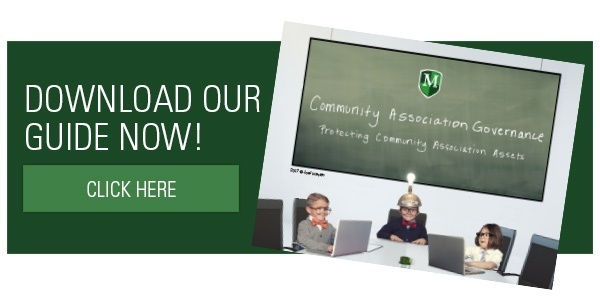In recent years, homeowners associations, have taken on a much more important role in the U.S. housing market. This fact makes it all the more vital that HOA leaders have the best financial and organizational tools at their disposal.
By working with an insurance partner that understands their business on a deeper level, HOAs and property managers will find it much easier to provide their residents with the highest level of service and support.
Now more than ever, community associations play an integral role in the lives of their residents and the housing market in general. That means the people who manage these communities are entrusted with a great deal of responsibility. According to the Community Associations Institute, a nonprofit advocacy organization for HOAs and condominium associations, the number of Americans living in shared-interest communities is growing quickly.
- According to CAI, there were at least 342,000 active community organizations in the U.S. in 2016. The majority of these are considered HOAs.
- In 2015, around 68 million Americans lived within a common-interest community, or around 21 percent of the total U.S. population. For comparison, CAI estimated 62 million residents in 2010 and 45.2 million in 2000.
- California had the second-most community associations in 2015, with almost 45,000 active associations representing more than 9 million residents.
Financially, community associations hold an incredible amount of responsibility.
- More than $5 trillion of U.S. real estate is managed by community associations.
- Community management groups collected a total of $85 billion in assessments from their residents, which serve as the primary funding source of these groups.
- As a result, community association managers contributed a cumulative $23 billion toward repair, replacement and enhancement of homes and shared spaces within their communities.
Managing and insuring that much capital can become a burdensome task without the financial expertise of a trusted insurance provider.
Addressing long-term challenges
HOAs face a promising future. However, with that promise comes several challenges that must be met.
According to a report from CAI, the financial and structural stability of community associations is a major source of both opportunity and uncertainty.
To meet these challenges head-on, community managers can’t go it alone. Turning these risks into rewards over the long term will depend on the strategic partnerships they make today.
For HOAs, success means sustainability. Whether it’s a community that’s just been built or one established decades ago, property managers face a great deal of responsibility in ensuring the community’s sustainability through careful planning. In practice, this is often a considerable challenge for a HOA to take on.
In states like California, for example, HOAs are required by law to maintain detailed records of reserve funds, as well as plans on how they will be spent. Government organizations like Fannie Mae, Freddie Mac and the Federal Housing Administration also require HOAs to record and allocate finances in specific ways. At the same time, community groups must be mindful of what’s best for their residents. That often requires its own level of fiscal planning and flexibility.
All of these tasks only become easier when property managers work with a trusted financial partner.
Meeting regulatory requirements and residential obligations requires a streamlined approach that’s readily attainable through digital tools. Choosing insurance coverages and providers with a local focus and an intuitive mindset is the best way for community managers to make sure every item on their to-do lists gets checked off. McGowan Program Administrators meets each of these needs with their ability to craft specialty insurance products for community associations. McGowan’s Power of the Pen gives HOAs and property managers all the tools needed to create a fully functioning insurance safety net for every aspect of their business.



